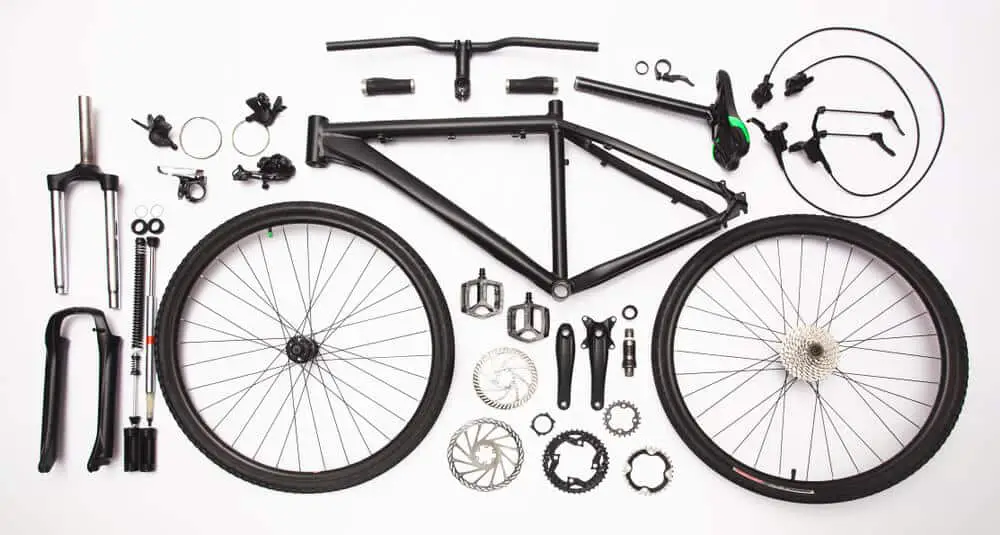If you ride a cycle, you will know that it takes many techniques to run the vehicle well. How swift it runs depends on the tire you have attached and if it is compatible or not. Experts’ common question is, can you use tubeless tire on tube rim bicycle?
My cousin is a cyclist, and I have seen him taking part in various activities of the cyclist society. He usually experiments on his bicycle to check what gives him extra benefits.
Let’s see what things you should keep in mind during setting a tire of your cycle, especially when you’re a professional.
What Is a Tubeless Tire?
A tubeless tire is a very famous thing for cycles, but do you know what it is? It is a tire with the wheel set up, and it doesn’t require a tube inside. Tubeless tires are also of different varieties.
Tube tires were preferable before the tubeless came, but when it got launched, it changed the mindset. The results showed that tubeless tires gave more strength and flexibility to the wheels.
Moreover, it provides quite a resistance against punctures; you may need enough reasons to have a tubeless tire. The structure itself is firm enough not to need any tube to run on a rough road with great speed.
Can You Use Tubeless Tire on Tube Rim Bicycle?
A tubeless tire is easy to set on a cycle, but the question arises if you can attach it or use it with a tube rim cycle or not. The answer is definitely yes, and you are good to use a tubeless tire in a tube rim cycle; isn’t pretty surprising?
A tube rim cycle has a tube around your bicycle wheel; now, you may think how you would have a tube in a tubeless tire. Let’s see how to use a tubeless tire in tube rim step by step and if necessary, how many methods you can follow:
Step 1: Remove the Wheel
First of all, you have to remove the wheel from your cycle or vehicle; you have to use some tools for the process.
Step 2: Attach the Tube First
You have to attach the tube around the wheel at two points: one is the rim bead hook, and another part is the tire bead hook. Anyway, the tube and hooks are connected to the rim and valve. It is not safe to attach it directly to the valve.
Step 3: Prepare the Tubeless Tire
Tubeless tires are easy to attach around the tube, but you need to prepare them well. However, you have to check if the tire is okay or not. Sometimes it may have leakage or any breakage around the tire. If so, you have to repair it and prepare it for use.
Step 4: Attach the Tire
The tire is ready to attach, and you have to follow the tube rim’s direction. You have to gather the things to attach the tire. It won’t take more than some minutes.
However, you may think about the differences between tuber and tubeless tire. Let’s see what the core differences are.
Hookless rims are sometimes more compatible with tubeless tires, but the prime differences are tubeless and tuber is that a tubeless tire will hold the air inside longer than a tuber.
If your tire leaks air or has a puncher, then a tubeless tire slowly lets the air out whereas, a tuber will suddenly release the air pressure inside.

How to Convert Your Existing Rims?
Tubeless tires are becoming all the rage right now. And if you use a standard tube tire, you have nothing to worry about because you can easily convert your existing non-tubeless rims into tubeless tires.
The first thing you have to do is remove the wheels from your bicycle. Once the wheels are off,remove the inner tubes as well. Make sure you clean your wheels to get a tight seal. The next thing you have to do is find the rim strip and face it so that the valve is positioned inside. Next,attach the rim strip into the spoke bed using the valve and pull the rim into position.
Once the valve is pushed through the hole, you must ensure that the entire rubber strip sits on the spoke bed. The seal should be completely airtight, and it should be even all the way through.Then comes the part where you have to put on the tires.
Next, you have to add sealant. You can add sealant through the valves into the tyre or put the sealant into each tyre bead. After adding sealant is done, fit the entire tyre onto the wheel. Then start inflating your tire by using compressed gas. Once the pressure is high enough, please give it a spin so that the sealant can work its magic by sealing any air leaks.
Once you are happy with your work, listen for any air leaks. If you do not hear any sound, then congratulations, you have successfully converted your non-tubeless rims into tubeless tires.
Advantages and Disadvantages of using a Tubeless tire
Tubeless tires are very handy, especially when it gets punctured while cycling. It lets the air out slowly, allowing you to keep your balance on the road and avoid any accident. Apart from that, here are some advantages of using a tubeless tire –
- The air inside a tire acts as a cushion while on the road, and that air pressure does not remain the same all the time. A tubeless tire allows you to use the cycle or any vehicle without worrying about the air pressure inside the tire. A tube tire will get punctured if the air pressure is too low, but you can drive a mile with a tubeless tire with low air pressure.
- A tubeless tire does not allow the air to come out quickly. It provides enough time when there is a leak or a puncture by emitting the air slowly. That allows you to get in safety if there is a leak or puncture while driving.
- Tubeless tires are very lightweight if you compare them with a tube tire. That allows you to go the extra mile with your vehicle and save fuel in the process.
- You can easily repair a tubeless tire with a liquid sealant. It is a quick fix; whereas, a tube tire will require you to change the entire tire.
- These types of tires are more stable, especially when driving at high speed. The tire contains the air giving equal and stable driving on the road at high speed.
Well, not everything is perfect, and a tubeless tire is no different. It does have some disadvantages, such as –
- First and foremost, a tubeless tire is expensive.
- Fitting the tire on the rim is difficult as it has to be air-tight to hold the air pressure inside the tire while driving.
How to remove Tire from Rim Bike
To remove a tire from a rim on a bike, you will need a few tools: a tire lever, a pump or air compressor, and a valve wrench (if necessary). Here are the steps to remove the tire:
- Deflate the tire completely by removing the valve cap and using the valve wrench to loosen the valve core. If you don’t have a valve wrench, you can also use a flathead screwdriver.
- Insert the tire lever under the edge of the tire, and use it to pry the tire away from the rim.
- Continue working your way around the tire, using the lever to pry it away from the rim. Once you have it pried off one section of the rim, you should be able to use your fingers to gently pull the tire off the rest of the way.
- Repeat the process on the other side of the wheel.
- Once the tire is off the rim, you can check the inside of the tire for any debris or damage, and inspect the rim for any damage or wear.
Note: Be careful not to damage the tube while removing the tire, and if you’re unsure about anything, it’s best to consult with a professional bike mechanic.
Conclusion
Tubeless tires are very handy for ridding your cycle without worrying about punctures or leaks. When that happens, you are still in control, unlike with a tuber. So, what if you have a tube rim and want to fit a tubeless tire there on your cycle. Can You Use Tubeless Tire on Tube Rim Bicycle?
Yes, you can, and we have an entire article that will provide ample knowledge about a tubeless tire, how to fit it, and the advantages of using a tubeless tire.
